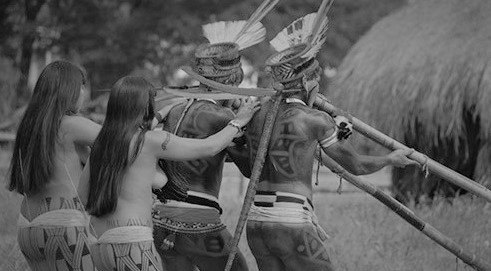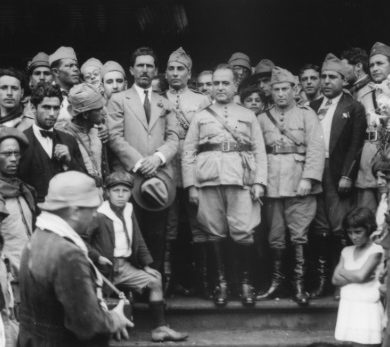The various events prior to the arrival of Europeans in Brazil are sometimes disregarded as an unattractive “first story” of primitive Amerindians. However, it is of upmost importance to study these beginnings of the history of Brazil.
The archaeological work carried out since the twentieth century, on the contrary, emphasizes the complexity and maturity of the civilizations of the so-called “precolonial” period. They represent key elements for understanding the cultural and sociological reality of a country among the most diverse in the world.

A very mysterious precolonial history of Brazil
The first traces of settlement in Brazil date back to around 60,000 BC so the conditions for establishing prehistoric facts are still cryptic.
The hypothesis of a migration of Asiatic ethnic groups on the American continent through the land “bridge” that connected Alaska to Siberia at the end of the Last Glaciation has been strongly questioned since the 1980s. In addition, anthropologists believe equally credibly in colonization of the New World by sea from Africa, or even Australia or the Polynesian archipelagos.
As with other Palaeolithic peoples, these first Brazilians practiced hunting and gathering, while carrying out important artistic and spiritual activity’s (rituals, organization of burials …) The natural park of Serra da Capivera, in Nordeste, represents one of the best preserved testimonies of the daily life of these proto-civilizations. As a World Heritage Site, it is home to 300 sites with more than 30,000 inscriptions, usually in the form of rock art or beautiful wall paintings.
The Rio Xingu region, seat of a highly evolved precolonial civilization
During the centuries following, these “primitive” peoples develop and structure themselves. Around the year 1200, their political organization is very similar to that of the city-states of ancient Greece. The common religious ceremonies play a major role in maintaining a good relationship between the different factions. Excavations undertaken in the 1990s estimated that the most advanced of these nations was along the Rio Xingu, near the Amazon Delta.
In this region, at the time of the European Middle Ages, between 50 and 100,000 people occupied a territory with planned urbanization equivalent in size to Belgium. The villages, satellites of the capital, were carefully connected by roads while the cities of importance were fortified by high palisades up to 2 kilometres in length. The location of these centres of activity were not defined at random: astronomical and cultural criteria guided the settlement of populations with the objective of ensuring the exploitation of all the nearby lands.
This society, considered “brilliant” by historians, disappeared inexplicably after 1400.

The Native American tribes, symbolic of the prehistory of Brazil
At the dawn of the sixteenth century, present-day Brazil was fully occupied by more than 200 independent ethnic groups. Ignoring private property, these Amerindians were essentially semi-nomadic farmers, whose staple food was cassava. They also grew tobacco and corn, while the invention of the blowgun made hunting easier.
Art and aesthetics occupy an important place in this civilization. They can often illustrate an abundant mythology or provide objects of prestige to the noblest castes of a society which became very hierarchical. Ceramic was one of the main materials, its uses included funeral urns for the Macara of the island of Marajo and zoomorphic statuettes in the region of Santarem.
Despite the quasi-extermination of the tribes linked to colonization, many elements of Native American culture have survived, especially in the Amazon. The ceremonial costumes made of plant fibres, the body paintings and the sumptuous feather ornaments are just a few examples.
A “cannibal” country for the first Europeans
The main Amerindian ethnic group, the Tupinambas quickly became famous throughout the West from the mid-sixteenth century. Their ritualized cannibalism and their “food” wars (the prisoners were frequently eaten) shocked the first European explorers.




